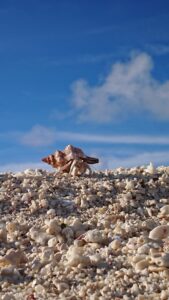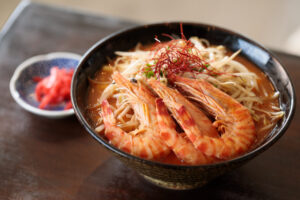Okinawa Traditional craft - Kumejima Tsumugi
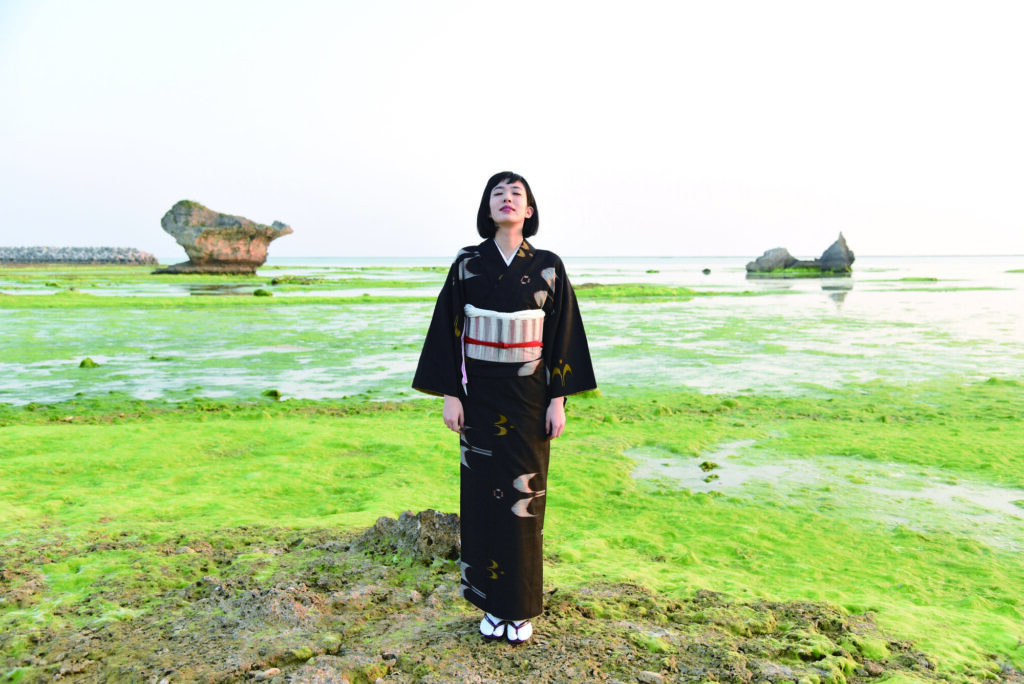
A Beautiful Kimono, Kumejima Tsumugi,
living with the sustainable island life more than 500 years.
Feel the beautiful traditional culture of Japan, Okinawa!
Through the traditional craft of Kumejima Tsumugi, you will experience the eternal flow of time in the Ryukyu Kingdom, which has been passed down from ancient times to the present day.
Kumejima Tsumugi which is a one of KIMONO, has a long history as a pongee fabric, and still retains some very rare techniques in Japan. It has maintained its traditions since the dynastic period in Okinawa, and the ancient techniques of sericulture, thread making, dyeing with natural dyes, and hand-weaving, etc., are still carried out by hand. All materials are natural, especially dyes made from mud, trees, and plants, most of which are produced on the island.
Kumejima Tsumugi has a simple and supple texture. In particular, mud-dyeing is highly regarded as a craft with its unique reddish-black color and luster. The kasuri kukuri technique is used to express the pattern by dyeing the yarn in the thread state and then weaving it. It requires extremely delicate techniques, and it takes a long time until the pattern is dyed into the threads. The tradition is still maintained in this island, manufacturing is done by hand, and patterning and dyeing are done by a single craftsman until the final process.It was designated as a national cultural property in 2004.
At "Kumejima Tsumugi no Sato, Yuimaru-kan," visitors can learn about the history of Kumejima Tsumugi, shop for traditional crafts, and try weaving coasters and dyeing with plants and trees. You will have a valuable experience where you can receive hands-on experience from a craftsmen who are actually involved in the weaving process at the workshop where Kumejima Tsumugi is actually made.
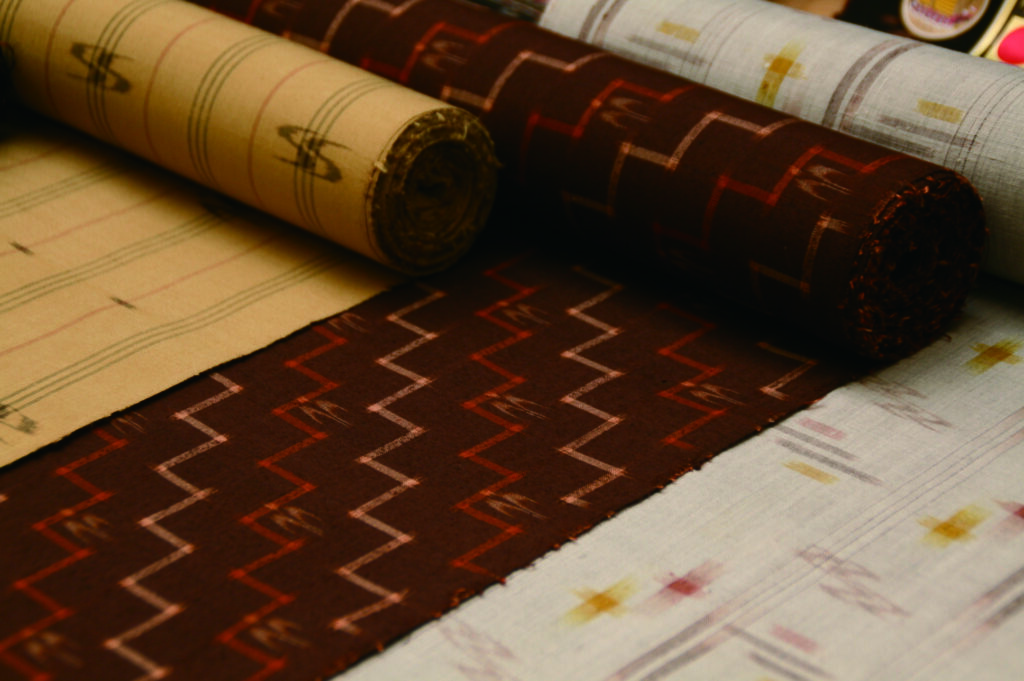
What is "Tsumugi"?
Tsumugi pongee is made of silk thread, which is made by pulling threads from silkworm cocoons. Yarn dyeing is a method of expressing a pattern by weaving after dyeing in the state of yarn. It requires a very delicate technique and takes a long time for the pattern to be dyed on the thread.
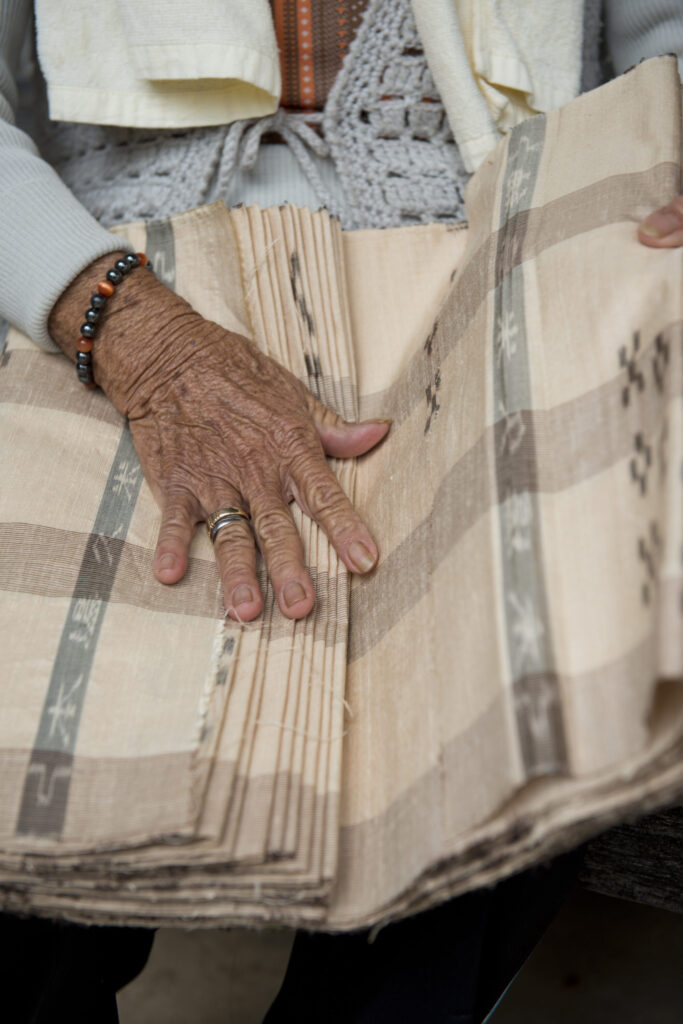
About "Kumejima Tsumugi"
Kumejima Tsumugi has a simple and supple texture, and has a unique reddish black color and luster. It is dyed with natural vegetation and mud dyeing using silk thread picked from silkworms as a raw material thread. The characteristic of Kumejima Tsumugi dyeing is that it is performed using only plant dyes that grow naturally on the island. There are more than 80 different patterns, with motifs of birds, clouds, money, and other animals, natural objects, and tools used in daily life. All the processes are carried out by a single craftsman.
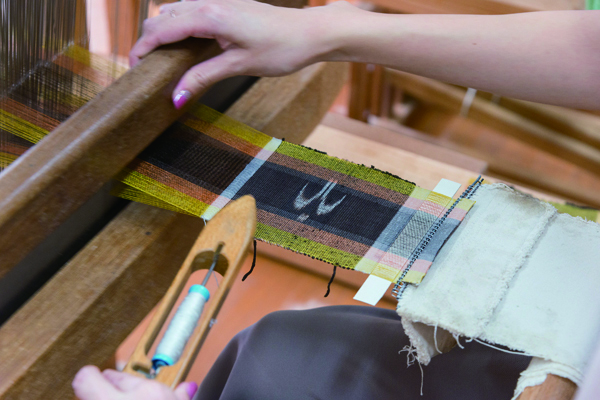
History
Kumejima is said to be the birthplace of Tsumugi because Kumejima Tsumugi is the starting point for the Japanese tsumugi manufacturing method. Kumejima Tsumugi has been woven since the time of the Ryukyu Kingdom in ancient time. There is the story that the origin of Kumejima Tsumugi is from an extraordinary person called Do-no-hiya, who spread it after he learned the silkworm culture industry from China in the latter half of the 15th century.
Around the Edo period (1603-1868 CE), Kumejima Tsumugi was paid as a tax in Kumejima. Generally, taxes were paid by rice in Japan. So people in Kumejima could keep rice as food, however, it was a very heavy tax for women who is between the ages of 15 and 45 except wives of government officials. The island women suffered under the strict screening process because of the high quality standards required for the Kumejima Tsumugi they were to deliver as a tax. The officials guided and supervised the weaving to make the cloth as desired in the design of the imperial cloth. It took a lot of hard work to weave the cloth according to their orders. When the weaving was not good or the quantity was insufficient, the officials beat women with whips and sticks. There is a story that they weaved cloth every day while crying. This history made the improvement of Kumejima Tsumugi technique.
The tradition of creation is still maintained, manufacturing is done by hand, and patterning and dyeing are done by a single craftsman until the final process. In 2004, it was designated as a national cultural property.
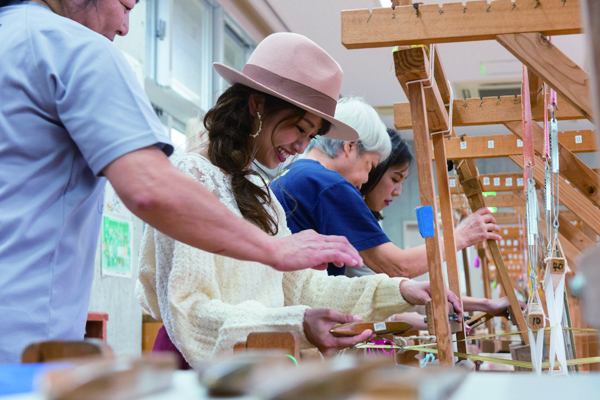
Kumejima Tsumugi Experience at Yuimaru-kan
You can create your original craft to bring back to your country as a memory of Okinawa.
At "Kumejima Tsumugi no Sato, Yuimaru-kan," visitors can experience the most enjoyable process of making Kumejima Tsumugi through weaving coasters and dyeing with plants and trees. You will have a valuable experience where you can receive hands-on experience from a craftsmen who are actually involved in the weaving process at the workshop where Kumejima Tsumugi is actually made. You can observe the daily work process and learn how much time and effort goes into each step of the process. Along with traditional crafts, you will be able to feel the thoughts and feelings of the people who live on the island.
You can choose a plant dyeing course or a weaving course as below in advance. If you choose both experiences it will take about 2 hours(The cost is from 4,700 yen.).
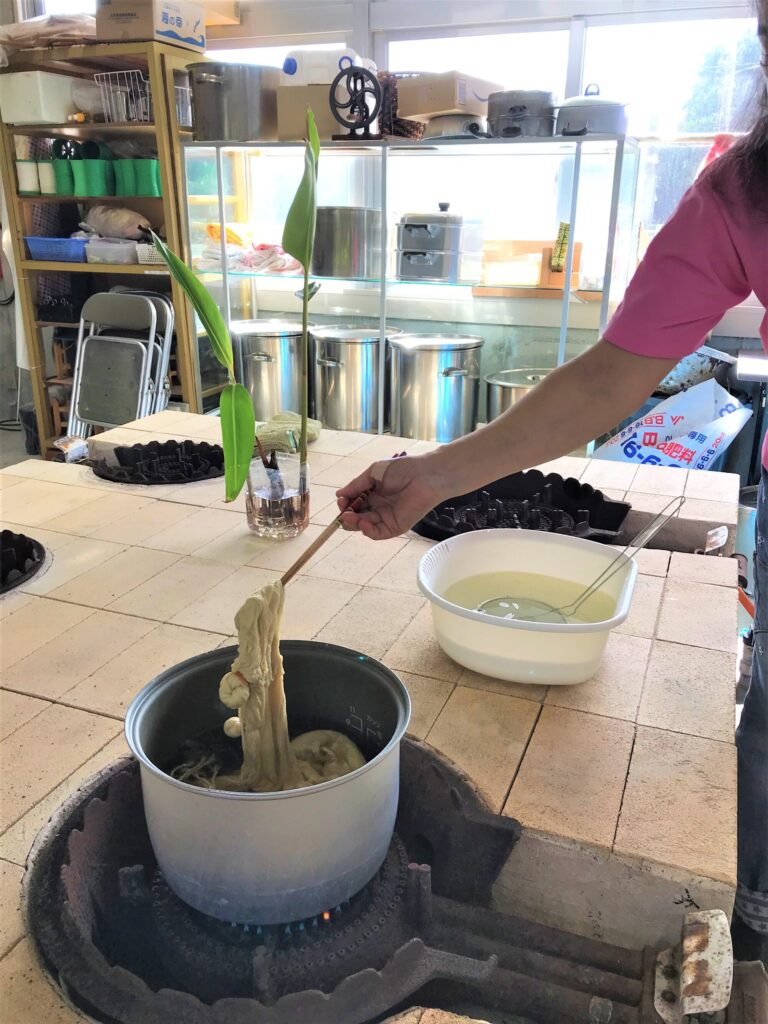
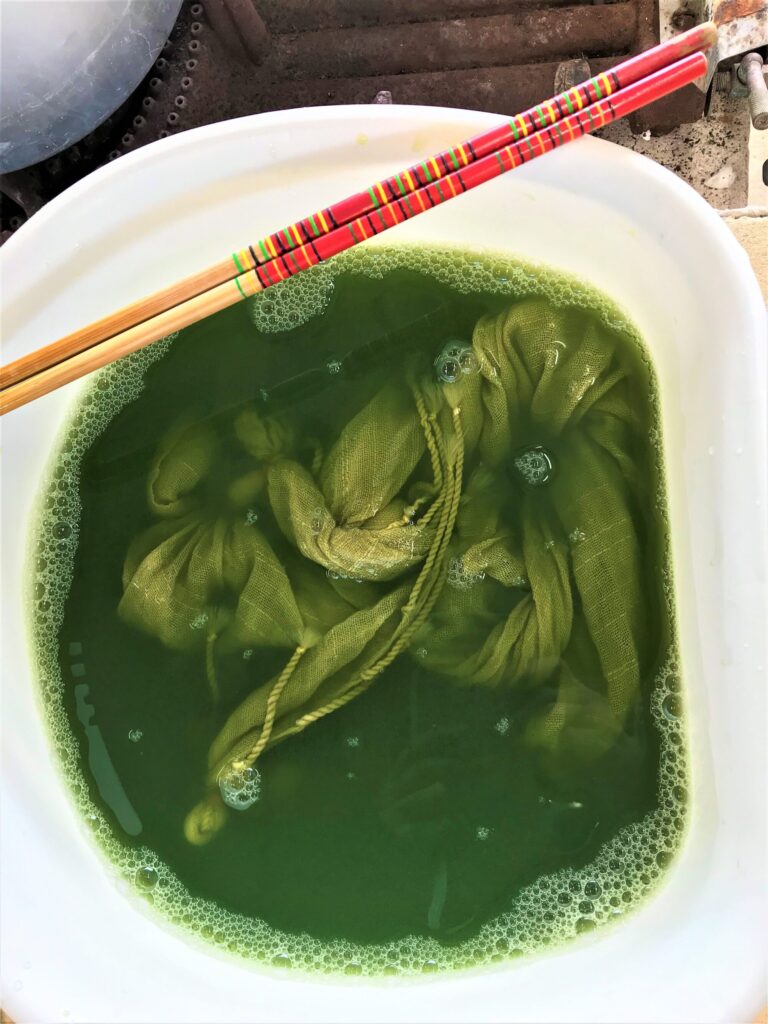
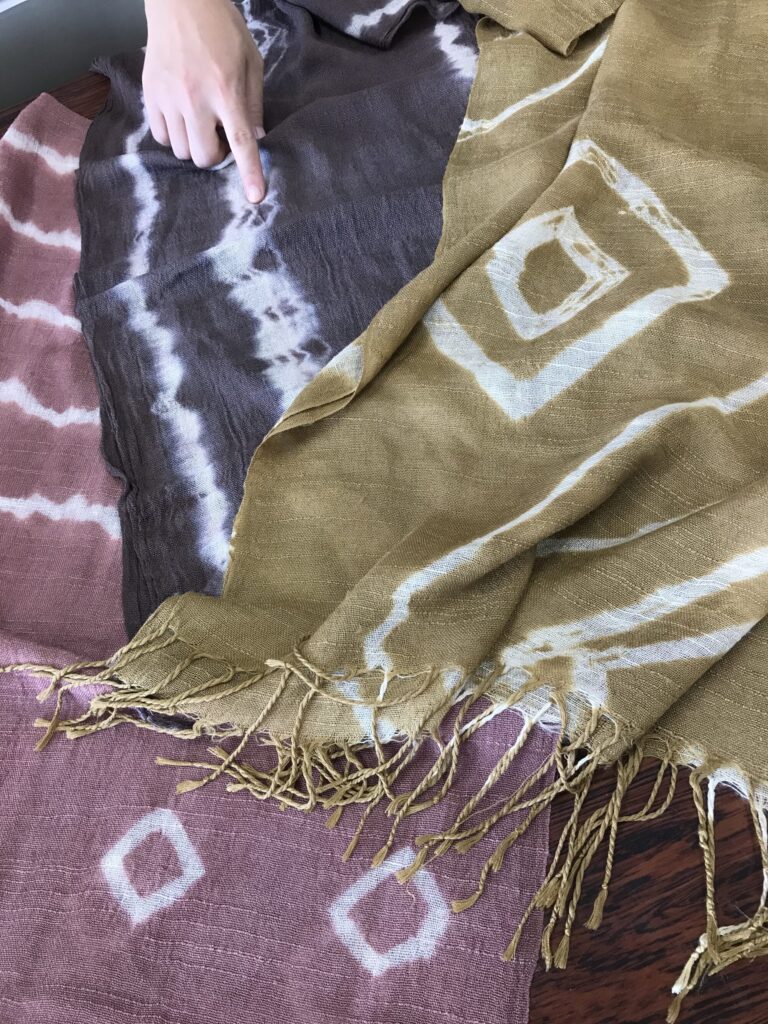
(1) Plant dyeing Experience:
There are two choices which are bandana dyeing (about 60 minutes, The cost is from 2,400 yen.) and silk shawl dyeing (about 90 minutes, The cost is from 3,700 yen.). Using sticks and rubber bands, the cloth is squeezed and dipped into a dye solution made from natural island materials. You can choose from several choices of dyes, such as Sugar cane, Fukugi tree, etc., and the finished color will be different for each material. Finally, You will find what pattern is created when you unfold the cloth.
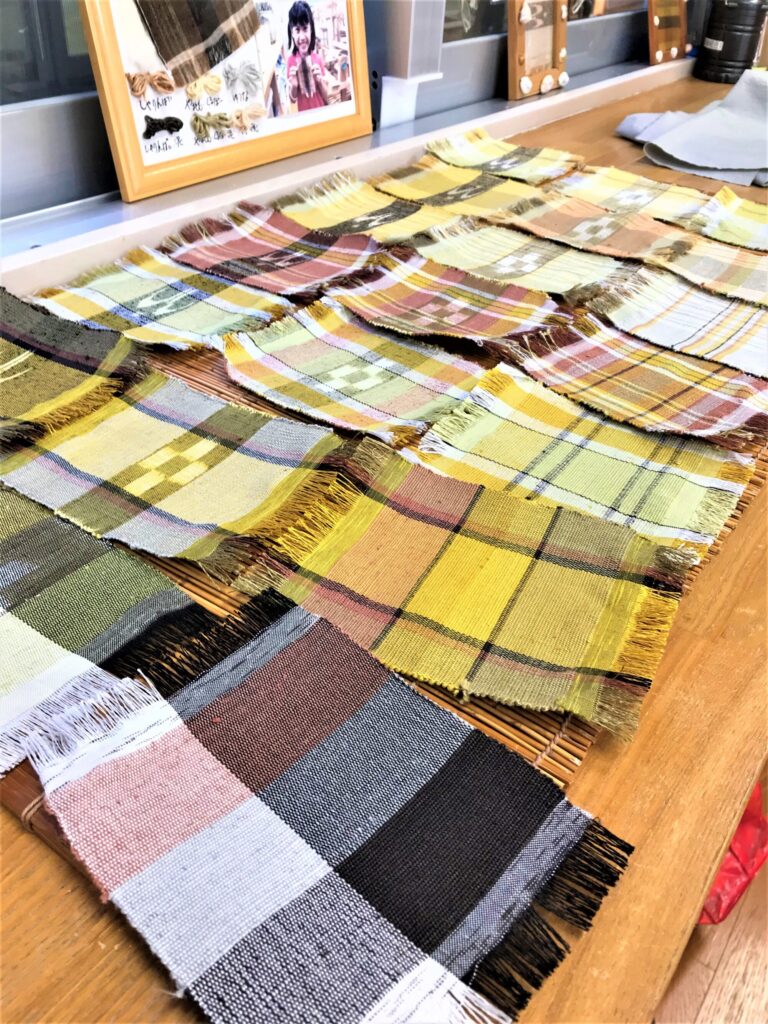
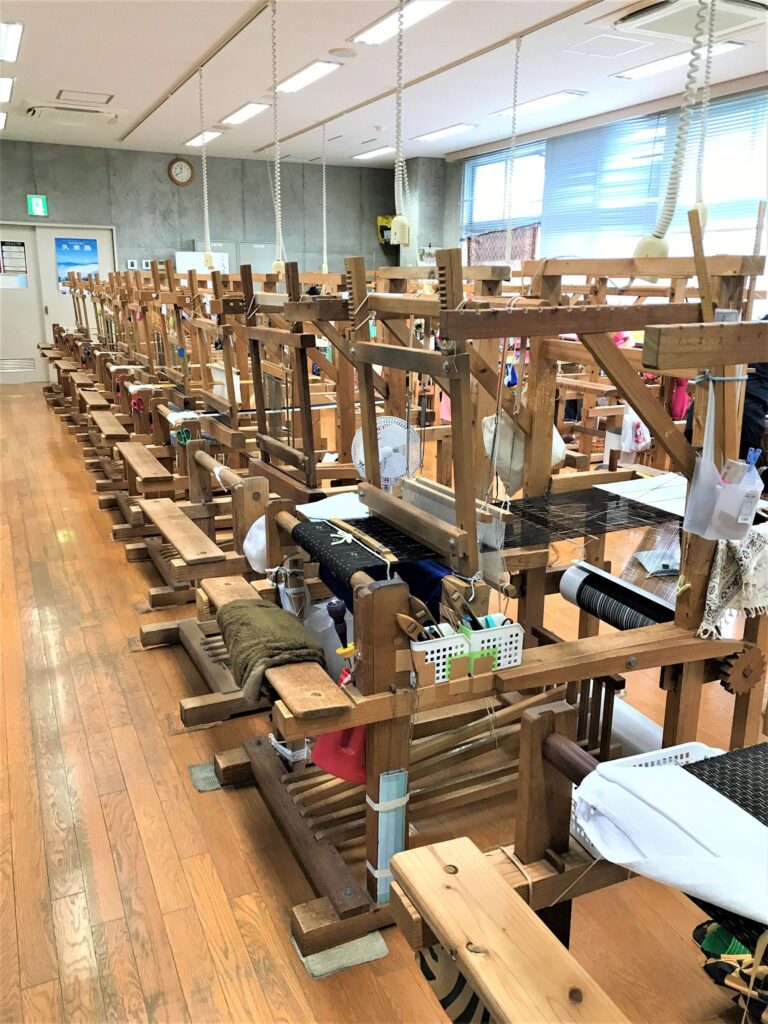
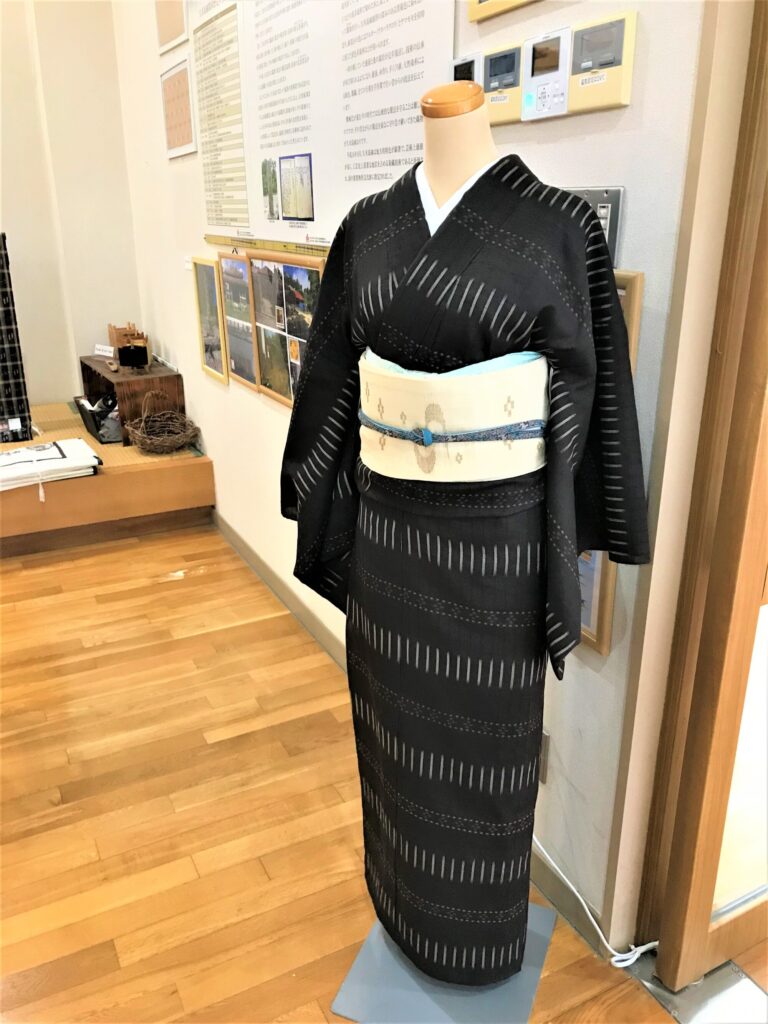
(2) Weaving Experience:
Coaster weaving takes about 30 minutes. The cost is from 2,200 yen. Choose your favorite design from several samples and weave it into a coaster using a loom. You can experience the process of weaving the weft threads using a shuttle on the warp threads set on the loom.
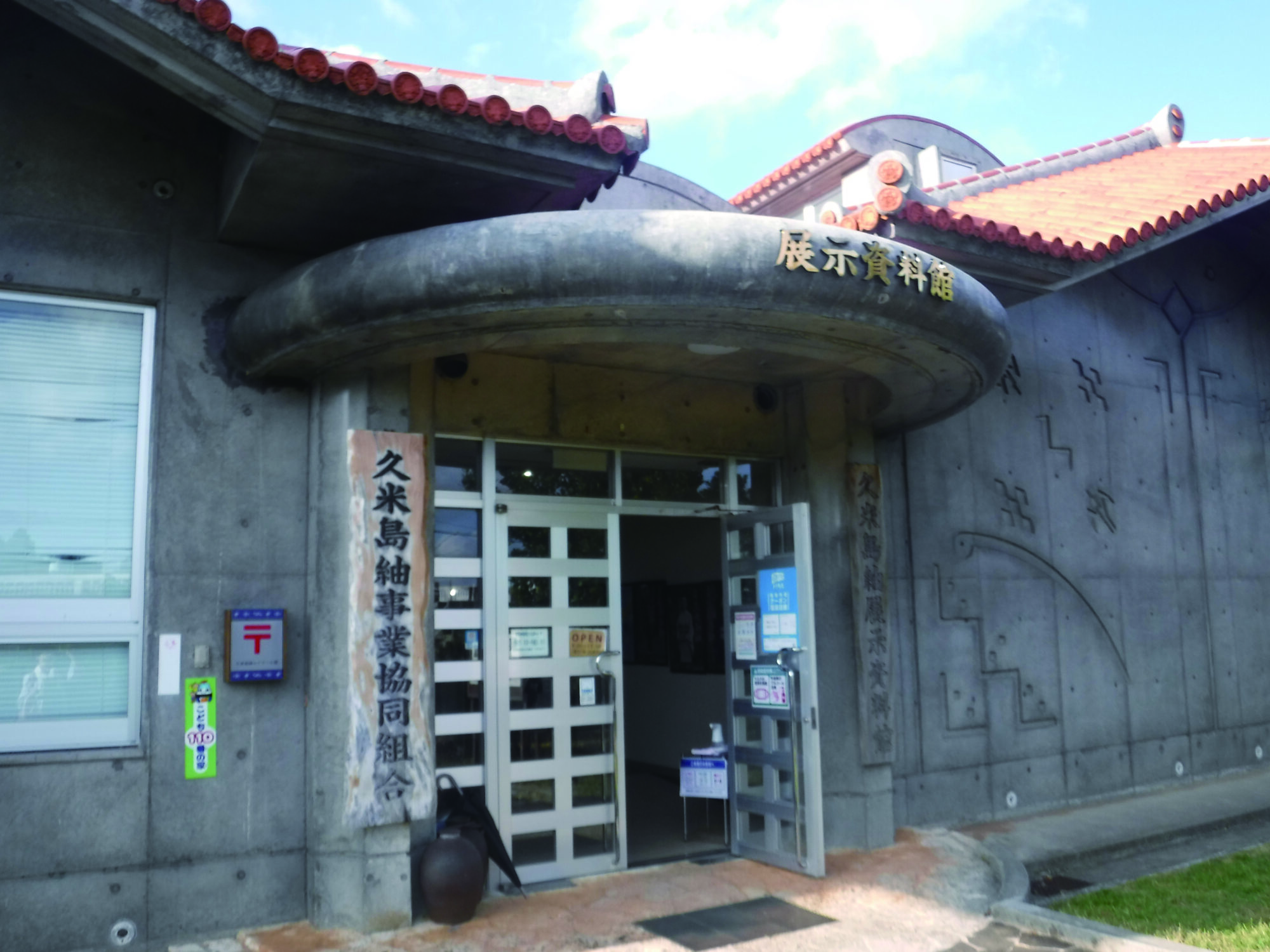
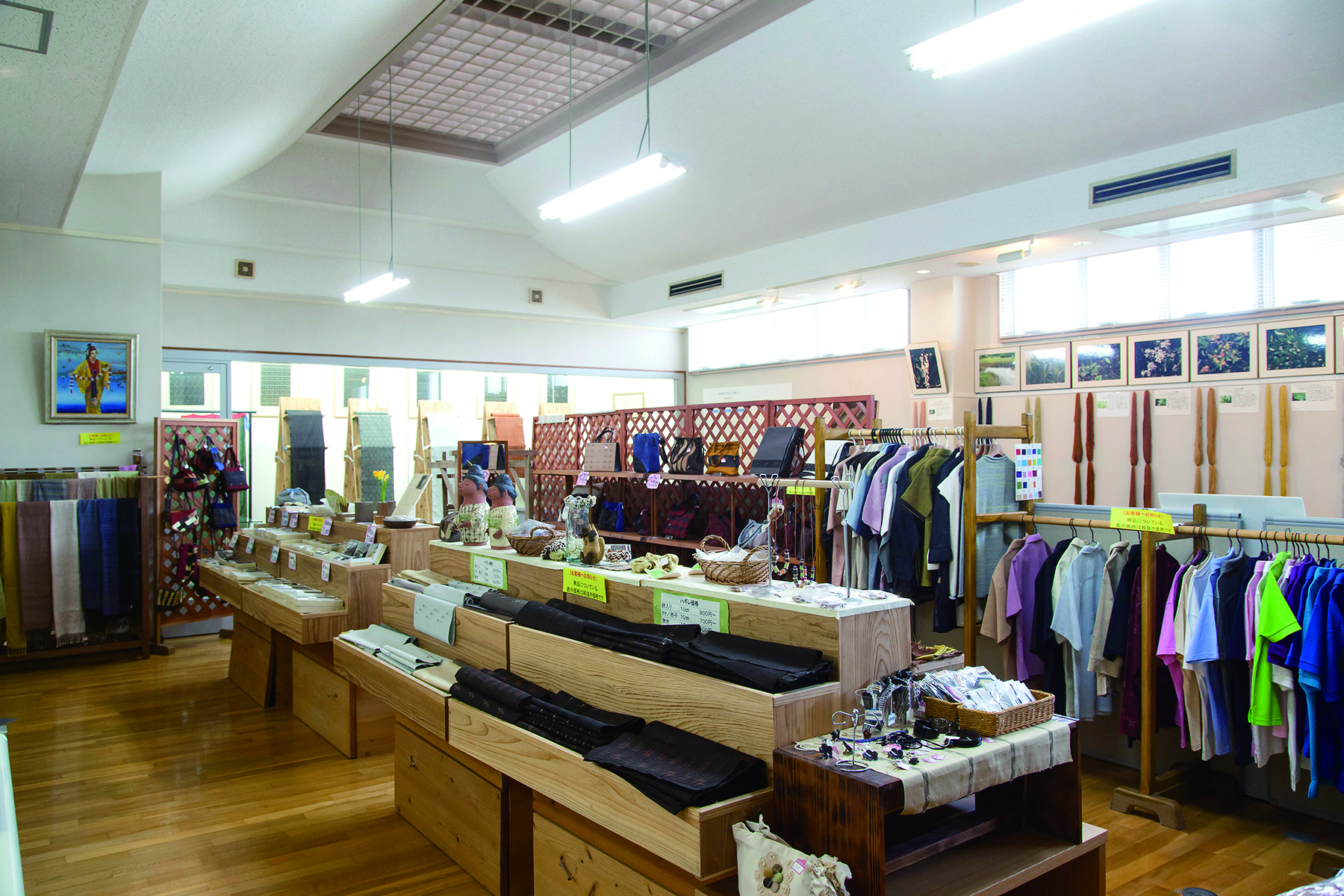
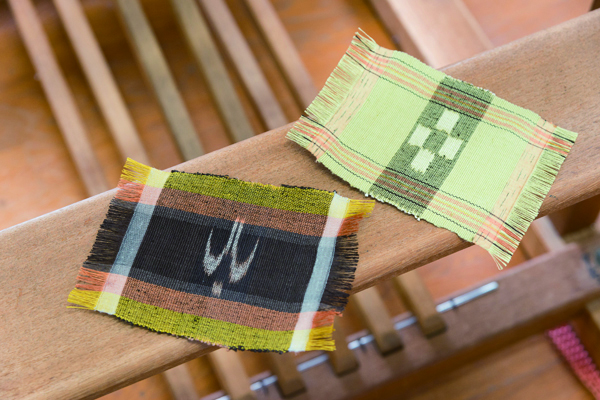
The Yuimaru-kan has interesting exhibits on the history of Kumejima Tsumugi, from sericulture to weaving, and the natural dyes used to produce the color of Kumejima Tsumugi. Kumejima tsumugi fabrics and products processed from Kumejima tsumugi such as wear and business card cases are displayed and sold.
Kumejima Weaving Pavilion(Yuimaru-kan)
Website: https://www.kume-tumugi.com
Address: 1878-1 Maja Kumejima, Okinawa
OPEN: 9:00 - Last entry 16:30
Entry Fee: Adult¥200 / Kids¥100
Exhibition, Shop and some weaving/dyeing experience programs available.
Closed: New Year Holiday, Bon Festival of the lunar calendar
